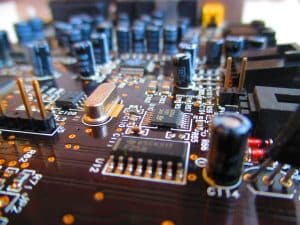Bio-Digital Interfaces: Organic Computing in Vehicles
We live in a world where technology is rapidly advancing, and our daily lives are becoming increasingly intertwined with digital devices. The automotive industry is no exception, with the introduction of new and innovative technologies like bio-digital interfaces. These interfaces, also known as organic computing, are revolutionizing the way we interact with our vehicles. In this article, we will delve into the concept of bio-digital interfaces and explore how they are transforming the driving experience.
The Evolution of Vehicle Interfaces
Gone are the days of simple buttons and levers to control our vehicles. Over the years, vehicle interfaces have evolved to include touchscreens, voice commands, and gesture controls. These technologies have made driving more seamless and efficient, but they still require conscious effort from the driver. This is where bio-digital interfaces come into play.
What are Bio-Digital Interfaces?
Bio-digital interfaces refer to the integration of biological signals, such as brain waves and muscle movements, with digital devices. By using biofeedback sensors, these interfaces can interpret and respond to our body’s natural signals, eliminating the need for physical interaction with the vehicle’s controls.
The technology behind bio-digital interfaces is not new. In fact, it has been used in healthcare for decades to monitor patients’ vital signs and provide personalized treatments. However, its application in the automotive industry is relatively new and has the potential to revolutionize the driving experience.
The Benefits of Bio-Digital Interfaces
Enhanced Safety
One of the primary goals of bio-digital interfaces in vehicles is to improve safety. By eliminating the need for manual control of the vehicle, drivers can keep their hands on the wheel and their eyes on the road at all times. This can significantly reduce the risk of accidents caused by distracted driving.
Bio-digital interfaces also have the potential to enhance safety for drivers with disabilities or physical limitations. By using their biological signals, they can control the vehicle without having to rely on traditional physical controls.
Improved Comfort and Convenience
The use of bio-digital interfaces can also lead to a more comfortable and convenient driving experience. Imagine being able to adjust the temperature or change the radio station with just a thought or a simple gesture. It eliminates the need for taking your hands off the wheel, making driving more seamless and less tiring.
Bio-digital interfaces can also enhance the overall driving experience by customizing settings and features based on the driver’s unique biological signals. For example, the seat position and cabin lighting can be adjusted to match the driver’s posture and mood.
Efficient Integration with Other Technologies
Bio-digital interfaces also have the potential to seamlessly integrate with other emerging technologies, such as artificial intelligence and autonomous driving. By using drivers’ biological signals, the vehicle can adapt to their needs and preferences, leading to a more personalized and efficient driving experience.
The integration of bio-digital interfaces with other technologies can also pave the way for the development of new features and functions in vehicles.
The Future of Bio-Digital Interfaces in Vehicles
The use of bio-digital interfaces in vehicles is still in its early stages, but the potential for growth and advancement is vast. As the technology evolves, we can expect to see more customization options, improved safety features, and seamless integration with other technologies.
Furthermore, bio-digital interfaces may also have the potential to collect valuable data about the drivers’ mental and physical state, providing insights for better road safety.
Conclusion
The introduction of bio-digital interfaces in vehicles is a significant step towards a more seamless, safe, and personalized driving experience. By integrating our natural bodily signals with digital technology, we can enhance the way we interact with our vehicles and the road. With further advancements and integration with other technologies, the future looks promising for bio-digital interfaces in the automotive industry.









